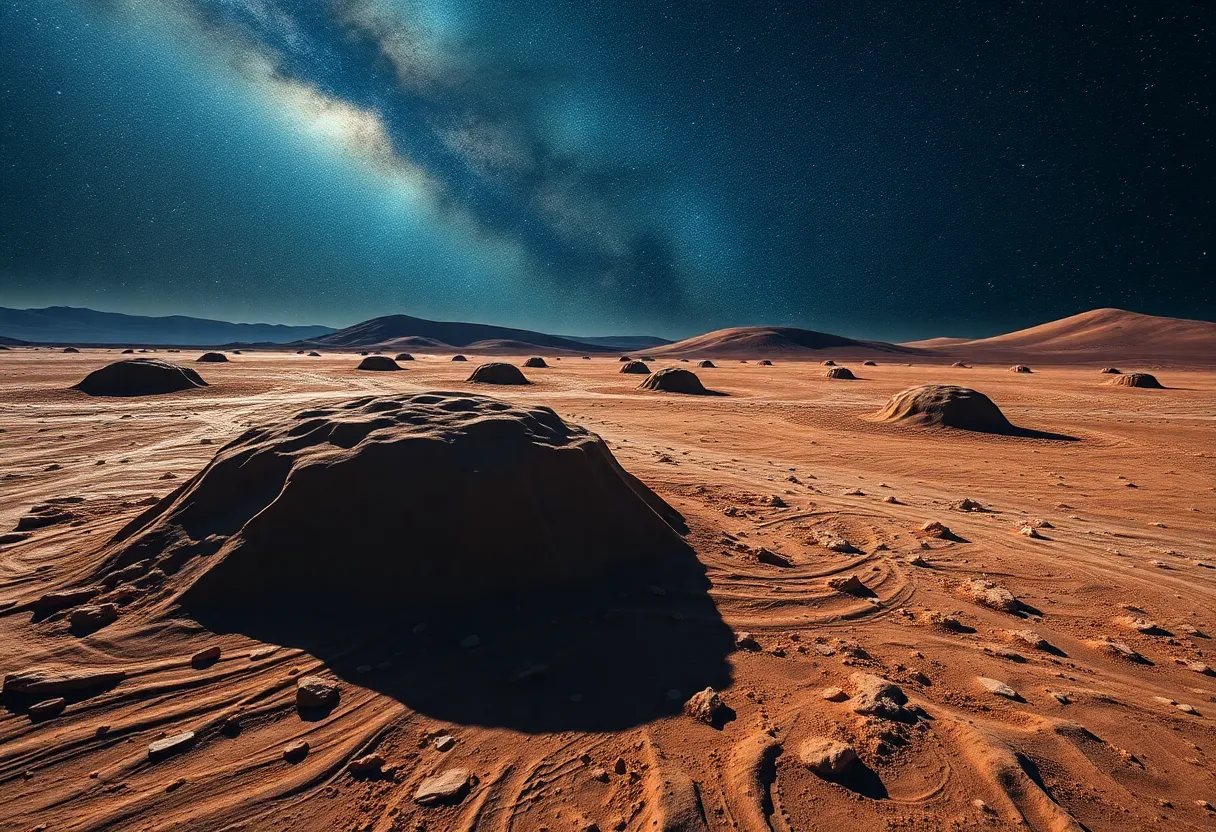News Summary
University of Central Florida (UCF) scientists are preparing for an exciting NASA mission to explore the Moon’s Gruithuisen Domes. This groundbreaking $35 million project, employing advanced Lunar-VISE instruments, aims to investigate volcanic activity on the Moon and shed light on its geological history. The mission’s landing site has been strategically shifted to the scientifically valuable Gruithuisen Domes. As preparations continue, excitement builds around the potential discoveries that could enhance our understanding of the Moon and beyond.
Exciting News from Orlando: UCF Scientists Are Off to the Moon!
Orlando is buzzing with excitement as scientists from the University of Central Florida (UCF) gear up for a thrilling new adventure aimed at exploring the Moon! The team is leading a fascinating NASA mission that will delve into the mysteries of the Moon’s spectacular Gruithuisen Domes.
Change of Plans: A New Lunar Landing Site
Just when everyone thought they had it all planned out, NASA and its partner, Astrobotic, decided to switch things up. Initially, the Peregrine lunar lander was set to land in an area known as Lacus Mortis, a basaltic plain situated in the northeastern part of the Moon. But now, with everything on the fast track for the mission’s launch, the landing site has been moved to the Gruithuisen Domes. This change promises to offer more scientific value and is in line with NASA’s upcoming Artemis activities.
What Are the Gruithuisen Domes?
The Gruithuisen Domes are an eye-catching pair of lunar mounds, known as Mons Gruithuisen Gamma and Mons Gruithuisen Delta. Scientists believe these fantastic formations may have formed due to unique volcanic activity on the Moon, specifically the kind of activity that produces silicic magma. This is particularly intriguing because current understanding suggests that such magma should not even exist on the Moon due to the absence of plate tectonics and water.
The Tools of Discovery: Lunar-VISE
To uncover the secrets of the Gruithuisen Domes, this mission will utilize a special set of scientific instruments known as Lunar-VISE. This clever suite includes five instruments—two mounted on the lander and three on a mobile rover. By focusing their studies on the dome’s summit, the team hopes to shed light on how these stunning geological features came to be.
A $35 Million Mission
All of this groundbreaking work comes with a price tag, as the mission has a budget of $35 million. The adventure is being led by brilliant minds Kerri Donaldson Hanna and Adrienne Dove from UCF, who are excited to contribute to our understanding of the Moon. Discoveries made by the Lunar-VISE could provide crucial insights for both robotic and human exploration of the Moon in the future, helping expand our knowledge about the geological history of not only the Moon but potentially other planets as well!
What’s Next?
As of now, NASA has not provided an updated launch date for the Peregrine lander, but what we do know is that the United Launch Alliance is gearing up for liftoff with its Vulcan Centaur rocket—which has already arrived at Cape Canaveral for pre-launch processing. With everything coming together, there’s a lot to be excited about as we prepare to set our sights on the Moon once again.
Conclusion: Keep Watching the Skies!
The world is on the brink of yet another lunar adventure, and the excitement is fully contagious. With UCF scientists at the helm and an intriguing destination on the horizon, the mission’s potential for discovery seems limitless. Stay tuned, because this is just the beginning of what could be a groundbreaking chapter in lunar exploration!
Deeper Dive: News & Info About This Topic
HERE Resources
University of Central Florida Pioneers Space Medicine Research
Additional Resources
- SpaceNews: NASA Changes Landing Site for Peregrine Lunar Lander
- Wikipedia: Gruithuisen Domes
- Jerusalem Post: UCF Scientists Are Off to the Moon
- Google Search: Lunar VISE
- NASA: Official Website
- Encyclopedia Britannica: Moon
- Universe Today: What Are the Gruithuisen Domes on the Moon?
- Google News: NASA Peregrine Lander
- NASA Earth Observatory: What Are the Gruithuisen Domes?
- Google Scholar: Gruithuisen Domes Geology





